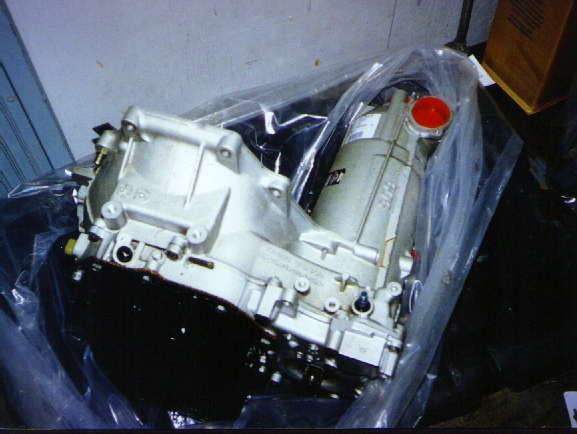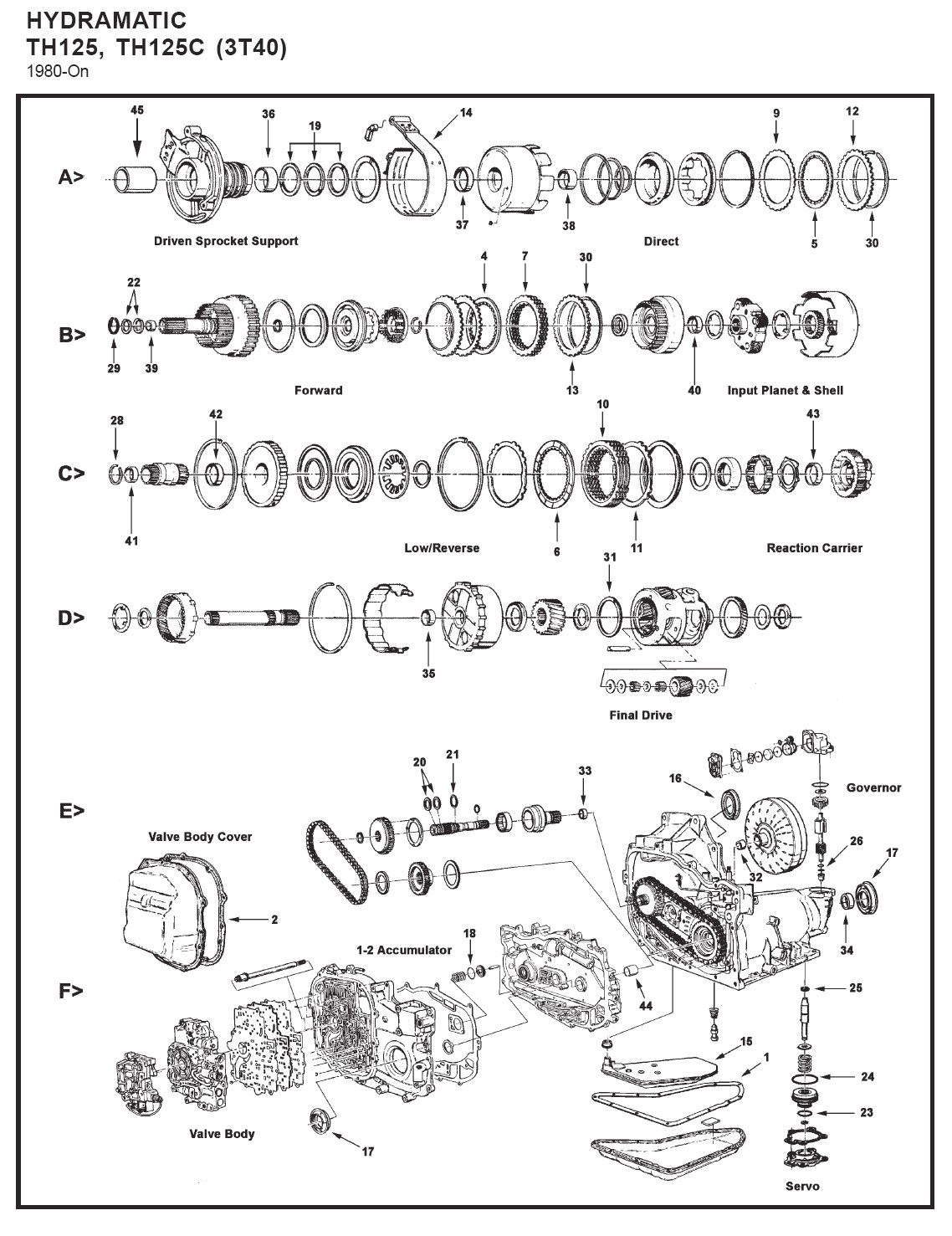
THM125C/3T40

The major components of this transaxle are:
The fluid pressure and shift points are controlled by throttle opening via a throttle valve (TV) cable.
The transaxle can be operated in any of six different modes shown on the shift quadrant.
P- Park position prevents the vehicle from rolling either forward or backward
R- Reverse allows the vehicle to be operated in a rearward direction
N- Neutral allows the engine to be started and operated without driving the vehicle.
D- Drive position is used for all normal driving conditions. It provides three gear ratios plus converter clutch operation.
2- Manual Second is used to provide acceleration and engine braking.
1- Manual Lo is used to provide maximum engine braking.
1st and 2nd gears may be selected at any vehicle speeds.
Gear Ratios
| First | Second | Third | Forth | Reverse |
|---|---|---|---|---|
2.840 |
1.600 |
1.000 |
N/A |
2.067 |
"THM 125C" MODEL & FINAL DRIVE RATIO TABLE
FINAL DRIVE RATIO |
2.84 |
3.06 |
3.33 |
|---|---|---|---|
MODEL |
BDC, BJC, CBC, CMC, CRC, CJC, CUC, CNC,CTC, CXC, KDC, LKC, PDC, PKC, PMC, PPC, PNC, PSC, PWC | CAC, CCC, CSC, CDC, HLC, HRC, JAC, JDC, JWC, PHC, PTC, TAC, TBC | CPC, HYC, HZC, JFC, JKC, JMC, JNC, JPC, JTC, JUC, JXC, LHC, RAC, RCC |
RANGE REFERNCE CHART
RANGE |
GEAR |
DIRECT CLUTCH |
INTERMEDIATE BAND |
FORWARD CLUTCH |
ROLLER CLUTCH |
LO-REVERSE CLUTCH |
|---|---|---|---|---|---|---|
DRIVE |
FIRST SECOND THIRD |
APPLIED |
APPLIED |
APPLIED APPLIED APPLIED |
HOLDING
|
|
INTERMEDIATE |
FIRST SECOND |
|
APPLIED |
APPLIED APPLIED |
HOLDING
|
|
LO |
FIRST
|
|
|
APPLIED
|
HOLDING
|
APPLIED
|
REVERSE
|
REVERSE
|
APPLIED
|
|
|
|
APPLIED
|
Maintenance Information
Transaxle fluid check (every 3,000 miles or 3 months)
|
Transaxle fluid and filter change(every 30,000 miles or 30 months)
|
